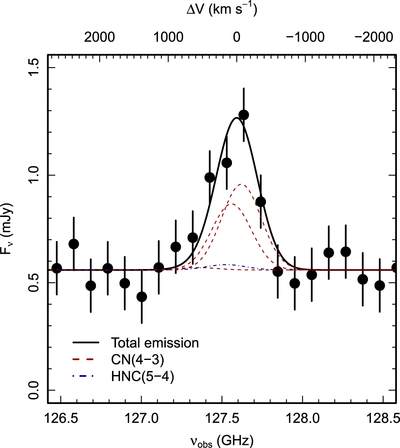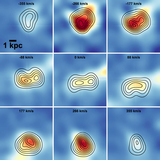Image Details

Caption: Figure 4.
Detection of CN (N = 4 → 3). The observed spectrum at 126.5–128.5 GHz is modeled with a combination of HNC (J = 5 → 4) and CN (N = 4 → 3) Gaussian emission lines with fixed redshift and velocity dispersion, plus a constant continuum component. CN (N = 4 → 3) comprises 19 hyperfine components in three spin groups, with the J = 7/2 → 5/2 and J = 9/2 → 7/2 components dominating the CN (N = 4 → 3) total emission for relative intensities calculated assuming optically thin conditions and local thermodynamic equilibrium (Müller et al. 2005). Our best-fitting model shows a negligible contribution from HNC (J = 5 → 4) (although we caution against drawing any conclusions regarding the relative strength of the lines, see Section 4.2), and supports a broad velocity width of FWHM = 680 km s−1. Note that, for presentation, the data has been binned to a channel width of 100 MHz or 240 km s−1, but the fit was done on the full-resolution spectrum.
Copyright and Terms & Conditions
© 2018. The American Astronomical Society. All rights reserved.






